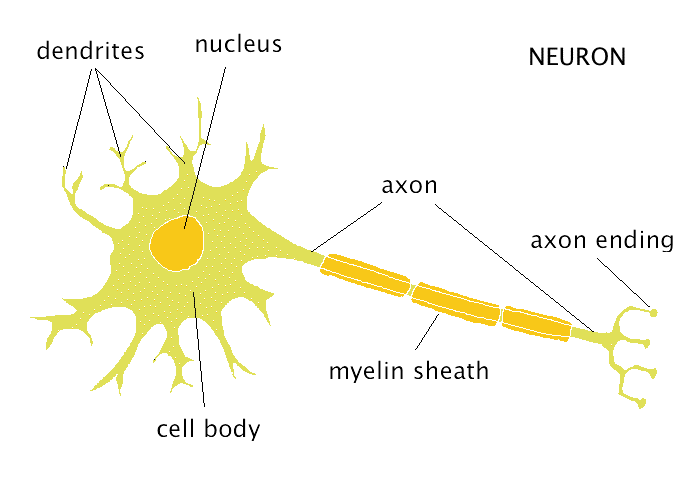STRUCTURE
Neurons come in different shapes and sizes to serve their function. However, all neurons have three common features, dendrites, cell body, and axons. Dendrites are short terminals that receive nerve impulses. Then the impulse travels to the cell body which contains is able to process the input. As well as that, the cell body is where the site of metabolic reactions happen and where the nucleus is contained. The impulse then travels to the axon, a branch that conducts impulses away from the cell.
CLASSIFYING NEURONSNeurons come in different shapes and sizes to serve their function. However, all neurons have three common features, dendrites, cell body, and axons. Dendrites are short terminals that receive nerve impulses. Then the impulse travels to the cell body which contains is able to process the input. As well as that, the cell body is where the site of metabolic reactions happen and where the nucleus is contained. The impulse then travels to the axon, a branch that conducts impulses away from the cell.
Neurons can be classified two ways, by structure, and by function.
By Structure
- Multipolar neuron: has several dendrites, one axon, is commonly found in the brain and spinal cord
- Bipolar neuron: one dendrite, one axon, commonly found in ear, retina, and olfactory area in the brain
- Unipolar neuron: the dendrite and axon are fused together, mainly found in the peripheral nervous system
By Function
- Sensory input: receives stimuli, forms nerve impulses, transmits impulses from sensory receptors to central nervous system (CNS)
- Integration: the link between sensory and motor, processes and integrates incoming sensory info and relays outgoing motor info
- Motor output: transmits info from CNS to effectors (eg. muscles, glands etc.)
REFLEX ARC
A reflex arc is a simple connection that results in a reflex action to a stimulus, consisting of as little as only 3 neurons. Reflexes are sudden, involuntary responses to certain stimuli. Reflex arcs move directly to and from the brain and spinal cord before the brain sections that control voluntary responses can process the sensory information. This is why, for example, when you touch a hot stove with your hand, you can very quickly pull away.


No comments:
Post a Comment